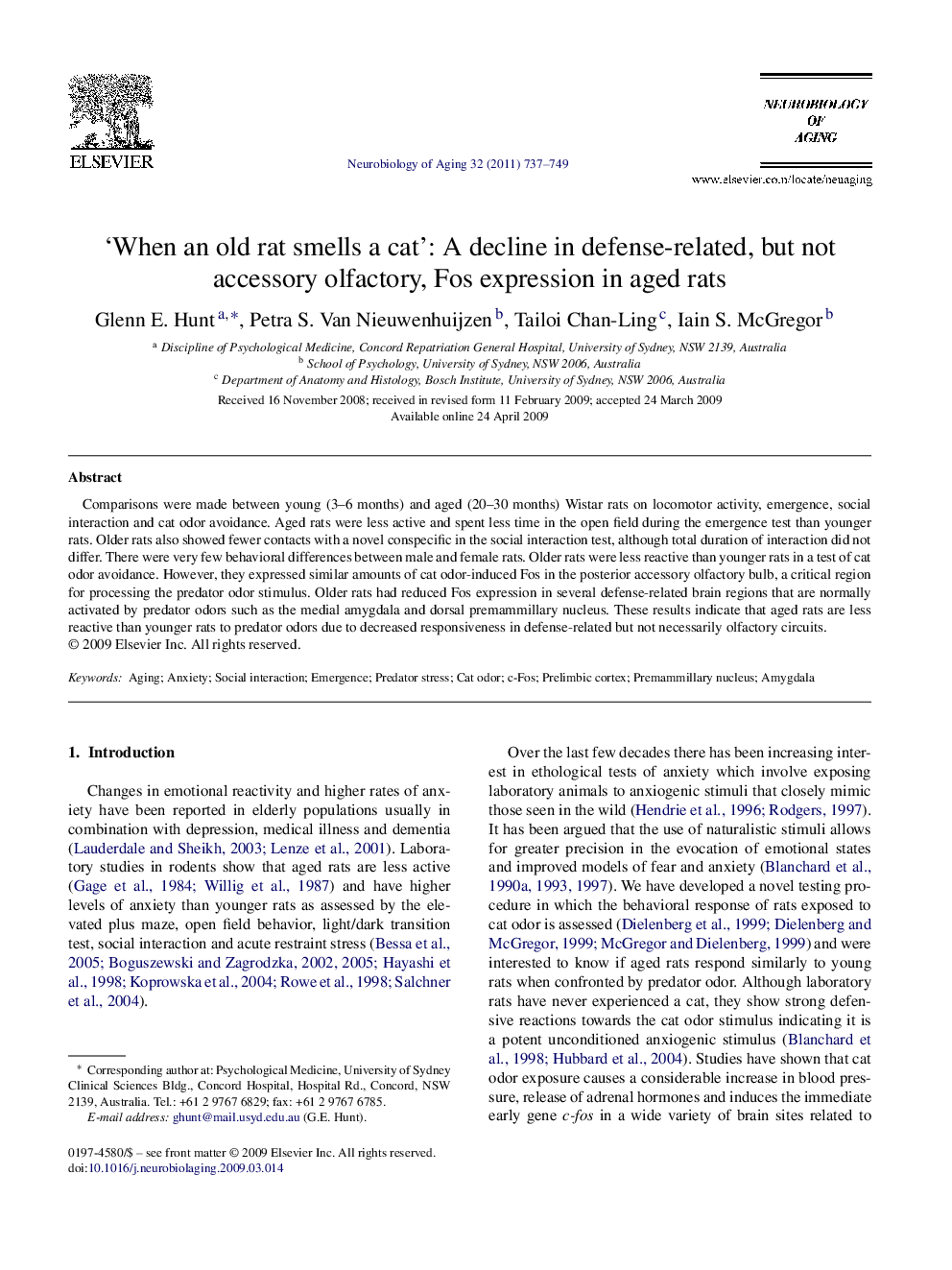| Article ID | Journal | Published Year | Pages | File Type |
|---|---|---|---|---|
| 330961 | Neurobiology of Aging | 2011 | 13 Pages |
Comparisons were made between young (3–6 months) and aged (20–30 months) Wistar rats on locomotor activity, emergence, social interaction and cat odor avoidance. Aged rats were less active and spent less time in the open field during the emergence test than younger rats. Older rats also showed fewer contacts with a novel conspecific in the social interaction test, although total duration of interaction did not differ. There were very few behavioral differences between male and female rats. Older rats were less reactive than younger rats in a test of cat odor avoidance. However, they expressed similar amounts of cat odor-induced Fos in the posterior accessory olfactory bulb, a critical region for processing the predator odor stimulus. Older rats had reduced Fos expression in several defense-related brain regions that are normally activated by predator odors such as the medial amygdala and dorsal premammillary nucleus. These results indicate that aged rats are less reactive than younger rats to predator odors due to decreased responsiveness in defense-related but not necessarily olfactory circuits.
